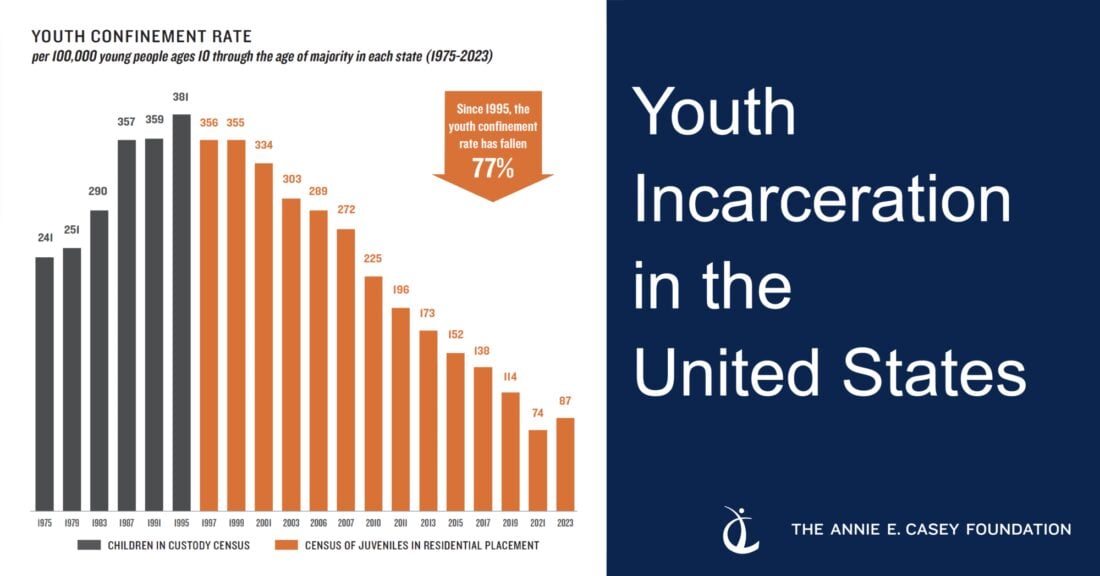Infographic Highlights Trends in Youth Incarceration Over Three Decades

A new infographic from the Annie E. Casey Foundation leverages newly released federal data to present key trends in youth incarceration over the last three decades.
Some notable takeaways: Youth incarceration dropped 77% and the number of juvenile arrests plummeted from 1995 to 2023. At the same time, harmful practices have persisted, including an overreliance on incarceration once young people enter the juvenile justice system. This is especially for Black and Native American youth.
“Confinement separates young people from the support networks and guidance they need to thrive and grow into responsible adults,” says Nate Balis, director of the Foundation’s Juvenile Justice Strategy Group. “While systems have made progress in arresting far fewer young people, those who do enter the system face the same odds of being confined and separated from those key ingredients for well-being and personal growth.”
In disaggregating data by race and ethnicity, the infographic also underscores a sobering reality: Black youth are 16 times as likely to be in custody as their Asian and Pacific Islander peers, four times as likely as white peers and three times as likely as Hispanic peers.
Beyond sharing the latest data, the infographic offers recommendations for alternatives to incarceration when young people break the law. This advice includes:
- Reduce all forms of out-of-home placement further by keeping significantly more young people safely in their communities.
- Expand opportunity for all by employing data-driven, targeted strategies, programs and resources to remove barriers and close gaps so all young people can succeed.
- Expand the use of effective community responses, including options that keep some kids away from the justice system altogether.
- Transform probation into a relationship-based, time-limited intervention focused on positive behavior change and long-term success for young people with serious and repeat arrest histories.
- Promote community-based guidance and support networks that offer young people stable connections to positive adults and activities.
Additional Resources on Youth Incarceration
Learn about elevating care for youth in custody
Read about a campaign by youth correctional leaders to close youth prisons






